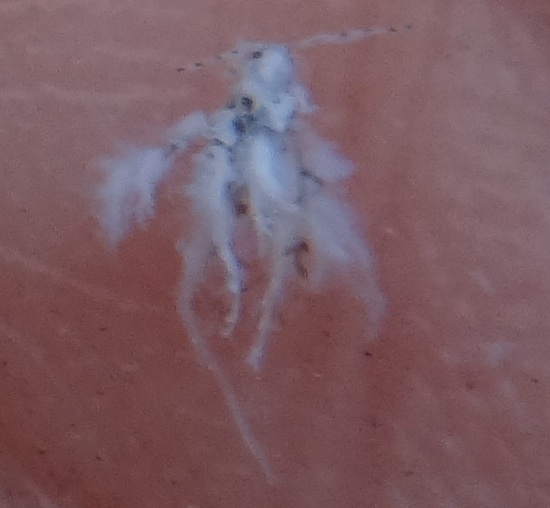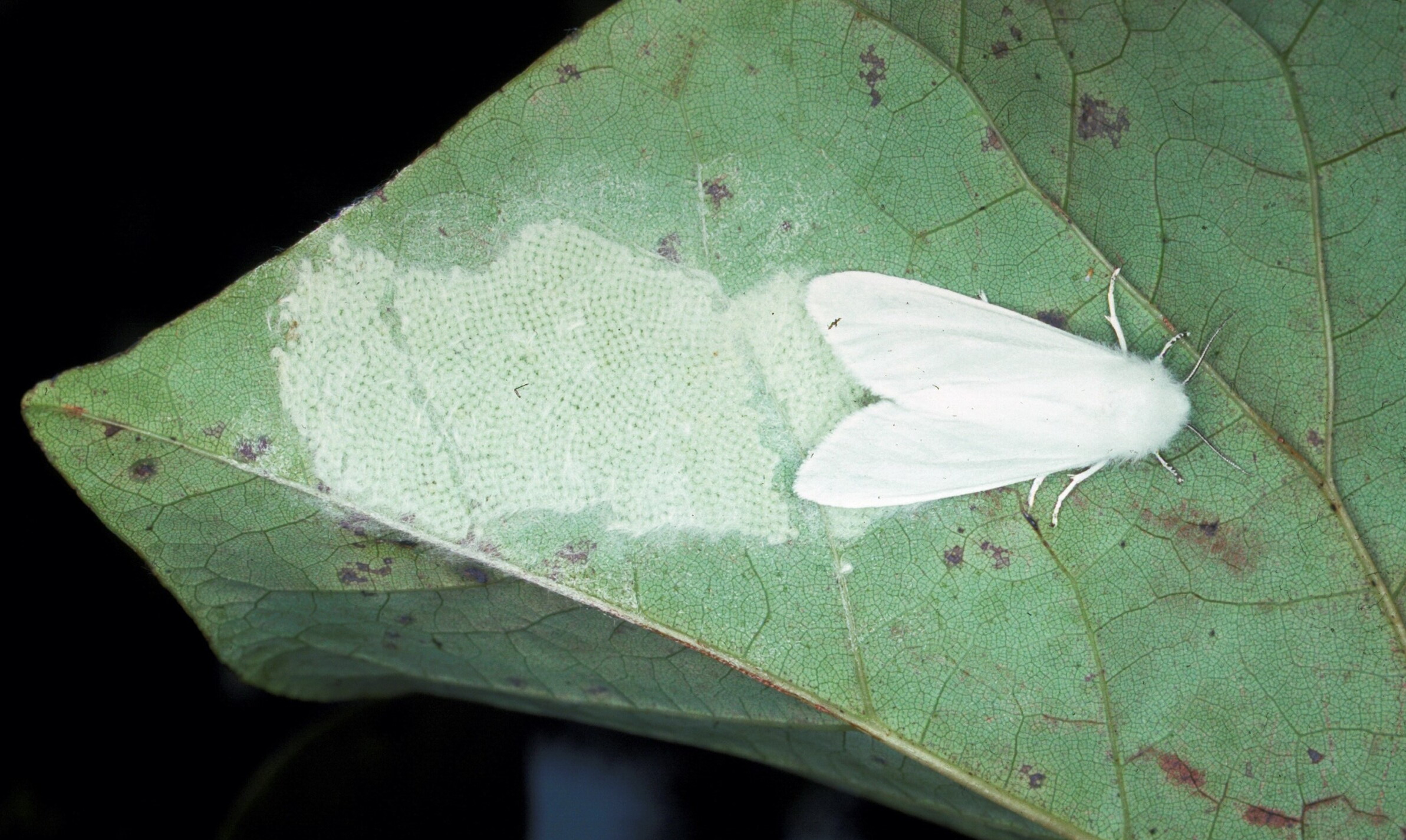An aphid pest that came to Georgia two decades ago has some homeowners seeing “snow” falling from their hackberry trees and cleaning sticky goo off their cars.
The “snowflakes” are actually a large infestation of Asian woolly hackberry aphids. These small, white insects fall off hackberry trees (also known as sugarberry trees) and seem to float in the air. Collectively falling, they can look like falling snow.
Woolly aphids cause problems similar to whiteflies, scales and other aphids. They suck the sap out of the leaves and secrete sticky honeydew on them. As a result, a black mold, known as sooty mold, may cover the leaves, stems and bark of the tree. You may see a black, sticky mess not only on the hackberry tree, but also on any plant or object underneath it, including your car, porch or patio furniture. One client even experienced aphids, sticky leaves and sap falling into her swimming pool and making a mess.
This exotic-invasive aphid was accidentally introduced into the United States in the late 1990s and can now be found from Florida to Texas. Wooly aphids are frequently mistaken for whiteflies, which can be common on gardenias and other landscape plants.
Woolly aphids are found only on hackberry trees. If you find them on other plants or on your back porch, they landed there by accident. These aphids are not harmful to people and do not bite or sting. They’re mainly just a nuisance.
What are hackberry trees?
Hackberry trees have leaves that are dark green on top and pale green underneath. The leaves are alternately arranged and have an oblong shape (lopsided at the base of the leaf and tapers to a point). The leaves are 2-4 inches long and one-and-one-fourth inches wide.
The bark of hackberries is light gray and smooth, with prominent corky, somewhat warty, ridges on older trees. Hackberry fruit are brownish-red, about a third-of-an-inch in diameter. This common native tree can grow 60 to 80 feet high with a trunk 2 to 3 feet in diameter.
Hackberry trees are very prolific seed producers. Inspect your backyard for weedy hackberry saplings than can come up anywhere near the hackberry tree. Cut them down to help reduce the number of woolly aphids you have in the future.
What can you do?
These insects produce several generations a year, so they can become very abundant by late summer. No long-term or serious damage to hackberry trees has been found, even after several years of infestations. Insecticides are not necessary for protecting the health of infested hackberry trees, but may be justified when honeydew and sooty mold becomes intolerable. One option is to just learn to live with woolly aphids by not parking cars or placing patio furniture directly beneath hackberry trees.
Another option is to cut down hackberry trees in your landscape. This will immediately eliminate the problem since these aphids can only survive on hackberry trees. But tree removal may be very costly for larger trees and can eliminate valuable shade in your landscape.
For larger hackberry trees, it’s not feasible to spray the leaves with an insecticide for control. Also keep in mind that the tree will need to be treated annually, because sooner or later these woolly aphids will return. It is possible to use a systemic insecticide, containing the active ingredient imidacloprid, applied as a root drench around the base of the tree. Systemic chemicals take several weeks to move from the roots into the leaves.
Treatments made in late summer will not provide any benefit since the leaves will soon be falling off for winter. Systemic insecticides should be applied in the spring, shortly after the leaves emerge. Killing the first generation of these aphids can go a long way in preventing a severe infestation later in the summer. For larger trees, make the first application in spring, and follow up with an application in late summer for longer control.





